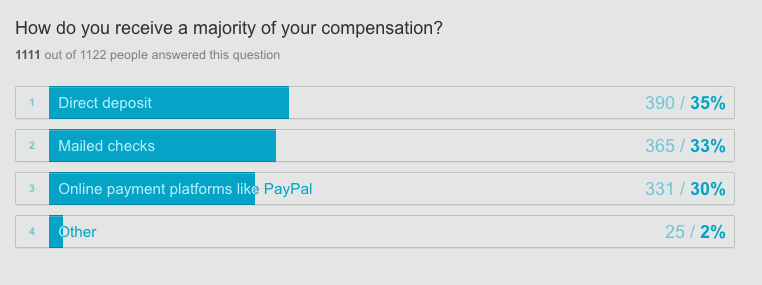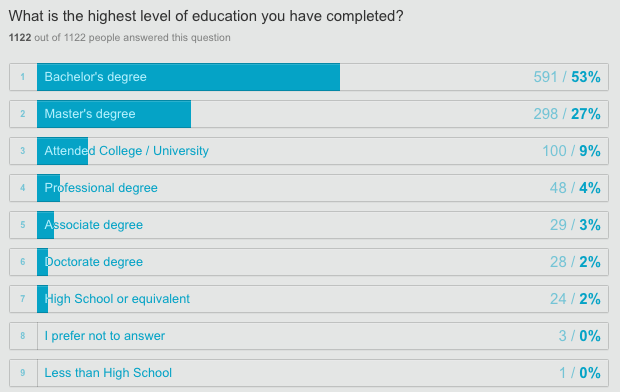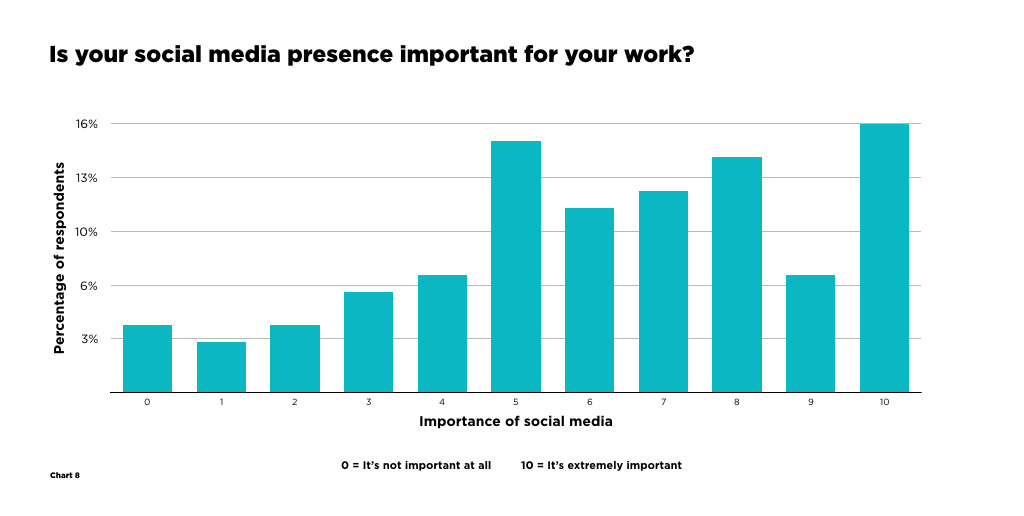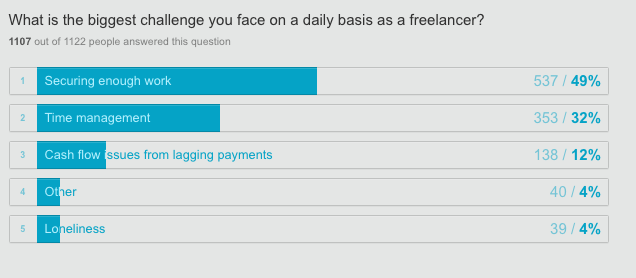Media
Study: Only 3 Percent of Freelance Creatives Use Co-Working Spaces
Co-working and the sharing economy may be all the buzz, but the perception that most freelancers spend their days in co-working spaces and drive Ubers seems to be more myth than fact.
A couple of months ago, we released our second annual study of freelance creatives on The Freelancer. We asked freelancers about a range of topics from how they find work, how they market themselves, how much they work, and more.
One thing was clear: Freelance creatives don’t use co-working spaces, and they don’t supplement their income by working for sharing economy giants like Uber and Airbnb. From a total of 1,119 freelancers, only 3 percent of respondents said they worked mostly in a co-working space—and only 1 percent of part-time freelance creatives claimed to be a part of the sharing economy.
There were plenty of other important takeaways from the study that tell us a lot about how the gig economy is developing. Here are 11 of the best.
Click here for more on the methodology and demographic background of the study.
1. Eighty percent of respondents have attained a bachelor’s degree or higher. By contrast, 33 percent of the total U.S. population has a bachelor’s degree or higher, a 47 percent gap.
2. Seventy-six percent of respondents freelance by choice. Despite the inherent complexities of the lifestyle—wage instability, lack of benefits, tax complications, and so on—creatives largely go freelance because they want to, not because they need to.
3. Overall, it was a good year for freelance creatives. Fifty-five percent think their lives as freelancers have improved in the past year, and only 13 percent believe it declined. That’s a drop from last year, however, when 65 percent said life as a freelancer had improved.
4. Freelance creatives are mixed when it comes to the predicting the future. Thirty-five percent expect freelancing to become less difficult, 34 percent think it will get more difficult, and 31 percent think it will stay the same.
5. Among full-time freelancers, income is at a comparable level to U.S. averages. Forty percent of the labor force’s yearly income falls under $20,000, compared to 35 percent for full-time freelancers. About 8 percent of full-time freelancers make more than $100,000 per year, compared to 6.6 percent of the U.S. labor force. Given that freelance creatives are overeducated compared to the general U.S. population, however, full-time freelancers are being under-compensated relative to their education level.
6. Freelancers receive payment in a variety of ways. Direct deposit, mailed checks, and digital payment (such as PayPal) are used about evenly, suggesting a majority of people don’t have to deal with dreaded lag times of three-plus months just to receive a check.

7. Social media is a critical part of life for many freelancers. Sixty-five percent have social media profiles that they update and use regularly for their work, and more freelancers ranked social media a 10 (on a 0–10 scale) for importance to their work than any other number.
Of all the social networks, LinkedIn was most important, followed closely by Twitter and Facebook. Instagram, Tumblr, and “Other” made up 7 percent of the total. If you’re looking for freelancers, LinkedIn, Twitter, and Facebook are the places you’ll most likely find them.
8. The majority of freelance creatives (57 percent) find work online.

Of that 57 percent, the majority of work comes from professional references. Digital platforms, cold pitching, and social media are the other major sources of work, but there’s a sizable gap between references and the rest.

9. The majority of respondents either complete an even mix of work between media companies and corporate clients or work more for media companies. In total, 67 percent of respondents had worked with a corporate client in the past year.
In terms of why freelance creatives work for brand clients, the reasons are mainly financial: 67 percent said they think working for a brand is either “financially necessary” or “a financial bonus.”
But that doesn’t mean freelance creatives are ashamed of the work. Only 4 percent thought working for corporate clients is “something to hide,” and a plurality (39 percent) of freelancers post their brand work on personal portfolios. Plus, 48 percent of respondents said they found working for brand clients to be “something I’m proud of” or “personally rewarding.”

10. Of all the hurdles freelancers face, almost half of respondents selected securing enough work as their biggest challenge.
11. Finally, we asked whether freelancers would take full-time job in their field with identical pay, plus benefits.

Compared to last year’s results, there was a downtick in freelancers who would stick it out over taking a full-time job. Excluding those who were only freelancing on the side, 25 percent would go full-time, compared with 30 percent last year.
Overall, it’s obvious that while many freelancers are happy to be where they are, plenty are not categorically opposed to traditional employment. Until there are similar protections and benefits to full-time work, that may not happen for a long time.
Click here to read the full analysis of our study on The Freelancer.
Image by WeWorkGet better at your job right now.
Read our monthly newsletter to master content marketing. It’s made for marketers, creators, and everyone in between.












